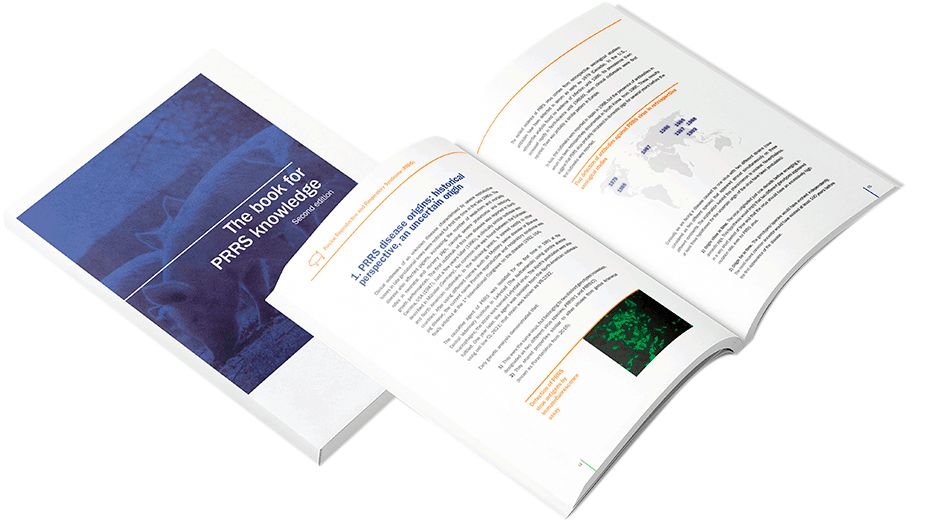1
Introducing PRRS
As its name implies, the clinical features of Porcine reproductive and respiratory syndrome (PRRS) include two separate pathologies: reproductive failure in sows (mainly characterised by abortions, mummified foetuses and weak-born piglets) and respiratory disease in young pigs. The disease was noticed for first time in the late 1980s and the causative agent was isolated in 1991. Nowadays, PRRS is prevalent in most countries and exists in epidemic and endemic forms.
2
PRRS disease origins: historical perspective, an uncertain origin
Clinical outbreaks of an unknown disease characterised by severe reproductive losses in late gestational sows were noticed for first the time in the late 1980s. The disease also affected piglets, increasing the number of weak-born and mortality rates in neonatal and nursery pigs, causing severe pneumonia and reducing growth performances. The first outbreak of this new disease was reported in North Carolina, USA (1987). Just a few years later (1990), a clinically similar outbreak was described in Münster (Germany). No common link was found between the European and North American outbreaks. In the following years, it spread rapidly to other countries. After using different names such as Mystery swine disease or Blue-ear pig disease, the current name Porcine reproductive and respiratory syndrome was finally adopted at the 1st International Congress on the disease (1992, USA).
3
Pathogenesis, Lesions and Clinical Disease
PRRS virus has a strongly restricted tropism for some sub-populations of macrophages found in lungs, placenta and lymphoid organs. Recent studies point out that PRRS virus is also able to infect and replicate in other subtype of cells, such as dendritic cells derived either from bone marrow or from monocyte cells. Conversely, monocytes, peritoneal macrophages, bone marrow progenitor cells and pulmonary and plasmacytoid dendritic cells are resistant to viral infection.
4
Concurrent infections
PRRS virus infection can increase the susceptibility of pigs to other infections or, alternatively, other infections may exist simultaneously with PRRS virus. Whichever the case, concurrent infections with other pathogens, whether viruses and/or bacteria, are common in most PRRS virus infections under field conditions. Obviously, the presence of these concurrent infections complicates the clinical picture as well as the diagnosis. This phenomenon is especially noticeable in weanling and grower pigs.
5
Economic impact in swine industry
Several authors have estimated that a PRRS outbreak could cost a mean of approximately €100-200 for each sow in the farm.
6
Geographical Distribution
Two genotypes were recognised (type 1 or European, and type 2 or North-American). Type 1 is the predominant genotype in Europe while type 2 is the most prevalent in America and Asia. Nowadays, they are designated as two different virus species: PRRSV1 and PRRSV2. Within PRRSV1, at least 4 different subtypes have been reported; subtype I is predominant in Western Europe whereas subtypes II, III and IV have been isolated only in countries eastwards of Poland until now. Regarding PRRSV2, two clades have been described.



